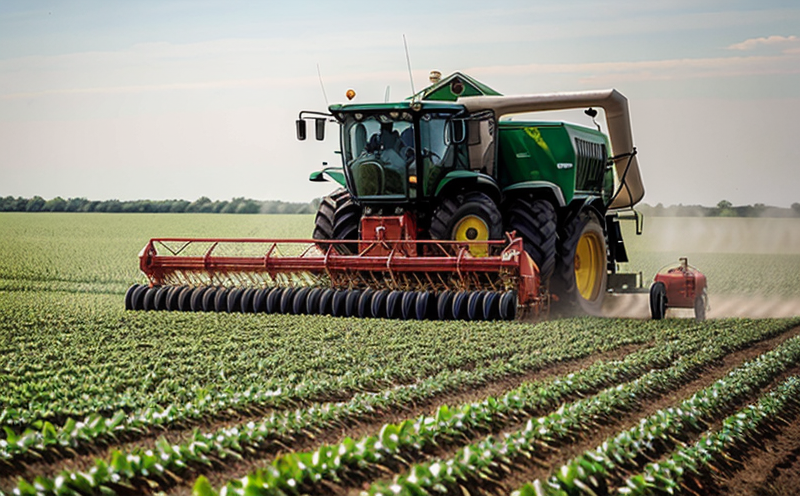Crop Lodging Resistance Testing
Crop lodging resistance testing is a critical service in agricultural and forestry testing that evaluates how well crops can withstand wind or other environmental stresses. This service is essential for breeders, farmers, and researchers to improve crop varieties, optimize planting strategies, and enhance overall productivity.
Understanding the lodging resistance of crops allows for better management practices, reducing economic losses due to yield reduction. This testing helps in selecting robust varieties that can thrive under challenging environmental conditions. By conducting such tests early in the breeding process, breeders can prioritize traits leading to stronger plant architecture and improved resilience.
The methodology involves simulating field conditions where the strength of the plant stems is tested against mechanical stress. Various techniques are employed depending on the crop type and its growth stage. For instance, young plants may be subjected to controlled wind tunnel tests or shaking tables to assess their stability during early development stages. Mature plants often undergo more robust field trials involving natural environmental factors like storms.
Testing lodging resistance provides a comprehensive look at both structural integrity and root system strength. Strong roots contribute significantly to the plant's ability to resist toppling over, while sturdy stems protect against wind damage. This holistic approach ensures that the crops selected for cultivation are not only high-yielding but also resilient enough to survive adverse weather conditions.
Moreover, lodging resistance testing plays a crucial role in sustainable agriculture by promoting environmentally friendly practices. By selecting varieties with better lodging resistance, farmers can reduce their dependency on chemical inputs such as pesticides and herbicides. Additionally, these robust crops contribute positively to soil health through their deep root systems which enhance nutrient uptake efficiency.
For quality managers looking into this service, it offers valuable insights into potential risks associated with certain crop varieties. This knowledge helps in making informed decisions regarding seed purchases and growing practices. Compliance officers benefit from ensuring that the selected seeds meet regulatory standards concerning plant health and safety.
| Aspect | Description |
|---|---|
| Sample Preparation | Young plants are typically harvested at specific growth stages, whereas mature plants may be collected post-harvest. |
| Testing Conditions | Controlled environments vary based on crop type and intended use. For example, wind tunnels simulate high-speed winds while shaking tables replicate ground vibrations. |
| Data Collection | Measurements include plant height, diameter at various points along the stem, leaf angle distribution, root depth, and soil moisture content. |
Scope and Methodology
- Simulation of natural environmental stresses on crops during growth stages.
- Evaluation of stem strength, root system depth, and leaf angle distribution.
- Data analysis to determine optimal conditions for crop cultivation.
- Comparative studies between different varieties within a single species.
International Acceptance and Recognition
Crop lodging resistance testing is widely accepted across various international standards such as ISO, ASTM, EN, IEC, and others. These organizations provide guidelines that ensure consistent and reliable results worldwide:
- ISO 13066:2009 - This standard specifies the procedure for determining the lodging resistance of field crops.
- ASTM D7648-11 - Offers a detailed protocol for testing the stability of tall-growing plants under simulated wind conditions.
- EN 50312:2010 - Provides specifications for assessing the resistance to mechanical stresses in agricultural crops.
- IEC 61491-2 - Covers the measurement of electrical properties of agricultural equipment, including those used in lodging resistance testing.
Competitive Advantage and Market Impact
Implementing crop lodging resistance testing offers significant competitive advantages to businesses operating within the agriculture sector. Here are some key benefits:
- Innovation Leadership: Companies that invest in advanced lodging resistance testing gain a head start on developing superior products.
- Cost Savings: Reduced need for chemical inputs translates into lower operational costs and increased profit margins.
- Sustainable Practices: Promoting sustainable farming methods aligns with growing consumer demand for eco-friendly agricultural practices.





